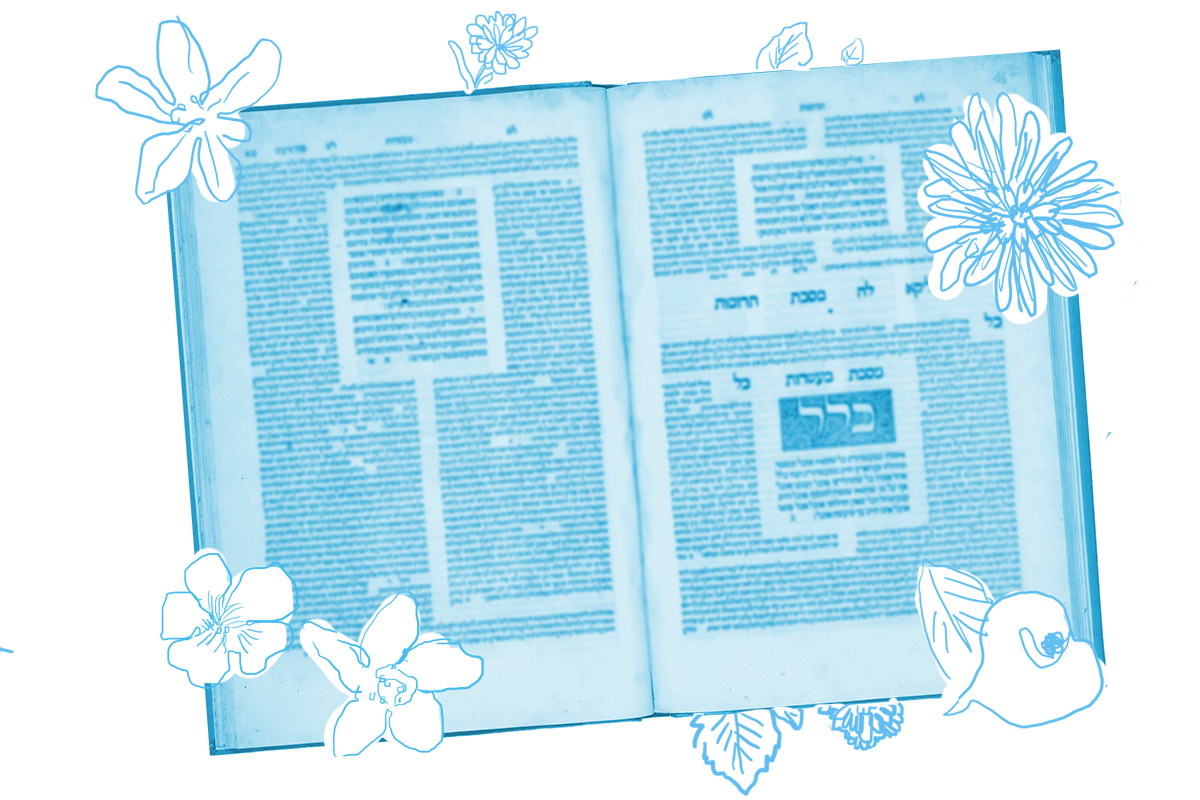On today’s daf, the Gemara continues its discussion about when a particular food item is sufficiently transformed that it changes the blessing recited when consuming it. We begin with the following beraita.
Whether (one drinks) date beer, or barley beer, or pomace (from wine), one recites over them the blessing, “by Whose word all things came to be.” Others say, over pomace that has the taste of wine one recites the blessing, “Who creates fruit of the vine.” Rabba and Rav Yosef both say: The law is not in accordance with the opinion of the others.
To make wine in antiquity, people lightly smashed grapes and left them in a vat to ferment, then pressed the wine from the grapes and strained the solids. Pomace is the pulpy matter that remains after grapes are pressed. When pomace is soaked in water, the resulting beverage contains both water and some of the wine remaining in the pomace. The question is: Is there enough wine in it that one recites the blessing over wine? The majority opinion is no — it’s no longer wine, and so the generic blessing “by Whose word all things came to be” should be recited. But a minority of “others” disagree.
Rava then narrows the debate:
If one poured three jugs of water and (the resulting beverage came to) four, then it’s wine. If one poured three and it came to three, it is nothing.
According to Rava, everyone agrees that when water is poured over pomace and it extracts enough wine to yield a mixture that is three parts water and one part wine, the resulting beverage is considered wine and one says the blessing for wine before drinking it. So too, they agree that if water is poured through the pomace and its volume does not increase, the resulting liquid, although it might acquire some color or taste from the pomace, is not considered wine and the generic blessing is recited.
So what then is the disagreement in the beraita about? According to Rava, it concerns a middle case where three jugs of water are poured through pomace and they yield three and a half jugs of liquid. According to the sages, the resulting mixture is six parts water and one part wine, so below the 25 percent threshold required for it to be considered wine. But the others hold that not all of the water that was poured over the pomace drained out. Some of it remains in the pomace and some of what drains out is wine, so the mixture is in fact two parts water and five parts wine — a ratio sufficient for the beverage to be considered wine.
The heart of this disagreement does not appear to be about which blessing such a mixture merits, but rather about the composition of the liquid that the process produces. Some sages assume that all of the water that was poured through the pomace passes through it and the others maintain that the pomace retains some of the water as it releases the wine that it holds.
In our day, we might test the two hypotheses, measuring the ratio of wine to water in the mixture and selecting the appropriate blessing based upon its composition. But the rabbis had no way to do a chemical analysis of the resulting mixture, so they rely on Rabba and Rav Yosef, who inform us that the blessing for pomace juice is “by Whose word all things came to be.”
The Gemara does not tell us why they rule this way, although its ruling is consistent with the talmudic principle that in a disagreement between a majority opinion and a minority, we follow the majority. But it does provide us with another hint:
Rav Nahman bar Yitzhak asked Rav Hiyya bar Avin: (If one steeps) pomace and produces a liquid that has the taste of wine, what is the blessing? Rav Hiyya bar Avin said to him: Do you hold it is wine? It is merely a sharp-flavored beverage.
Rav Hiyya’s explanation does not require chemical analysis or mathematics. When water is poured through pomace, it may acquire some flavor, maybe even a strong one, but it’s not wine — so why would we treat it as if it is?
Sometimes the simplest of answers is the strongest one.
Read all of Bava Batra 96 on Sefaria.
This piece originally appeared in a My Jewish Learning Daf Yomi email newsletter sent on September 29, 2024. If you are interested in receiving the newsletter, sign up here.
With your help, My Jewish Learning can provide endless opportunities for learning, connection and discovery.



